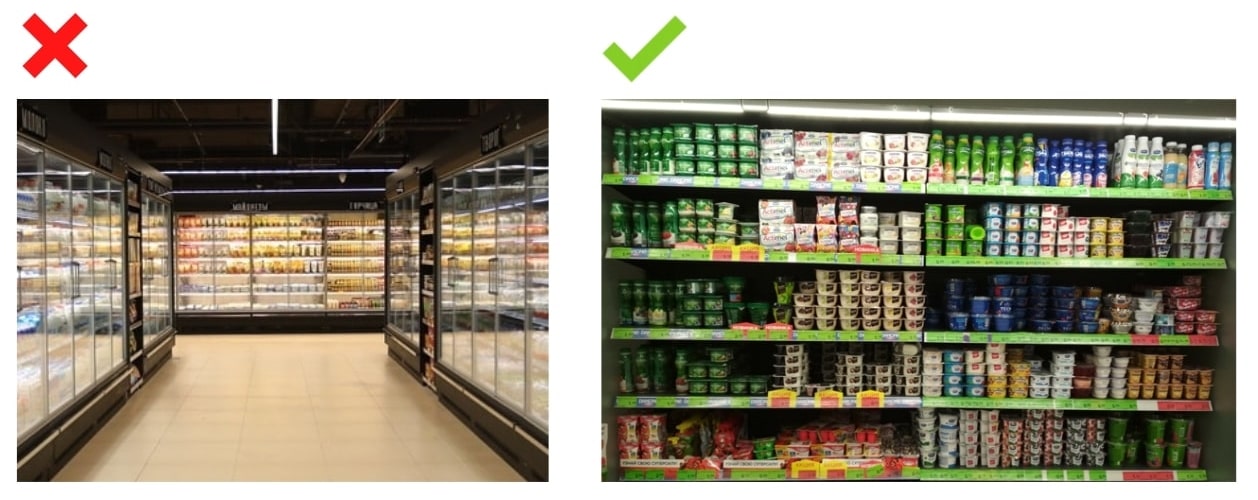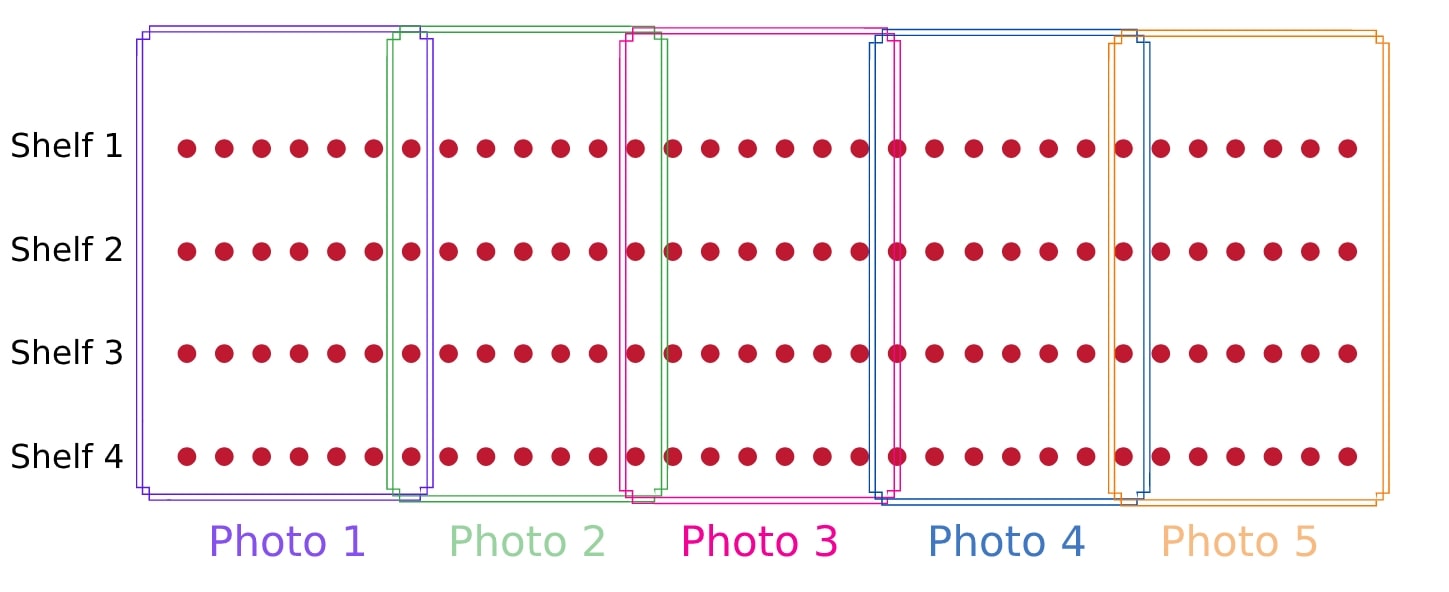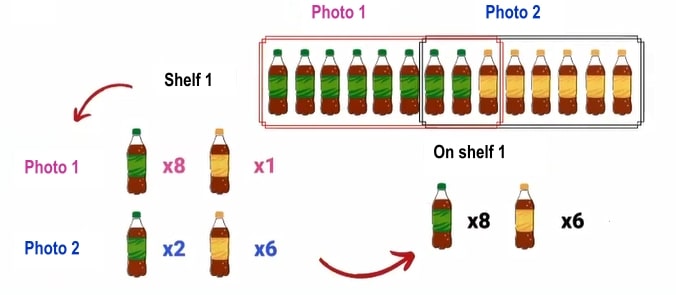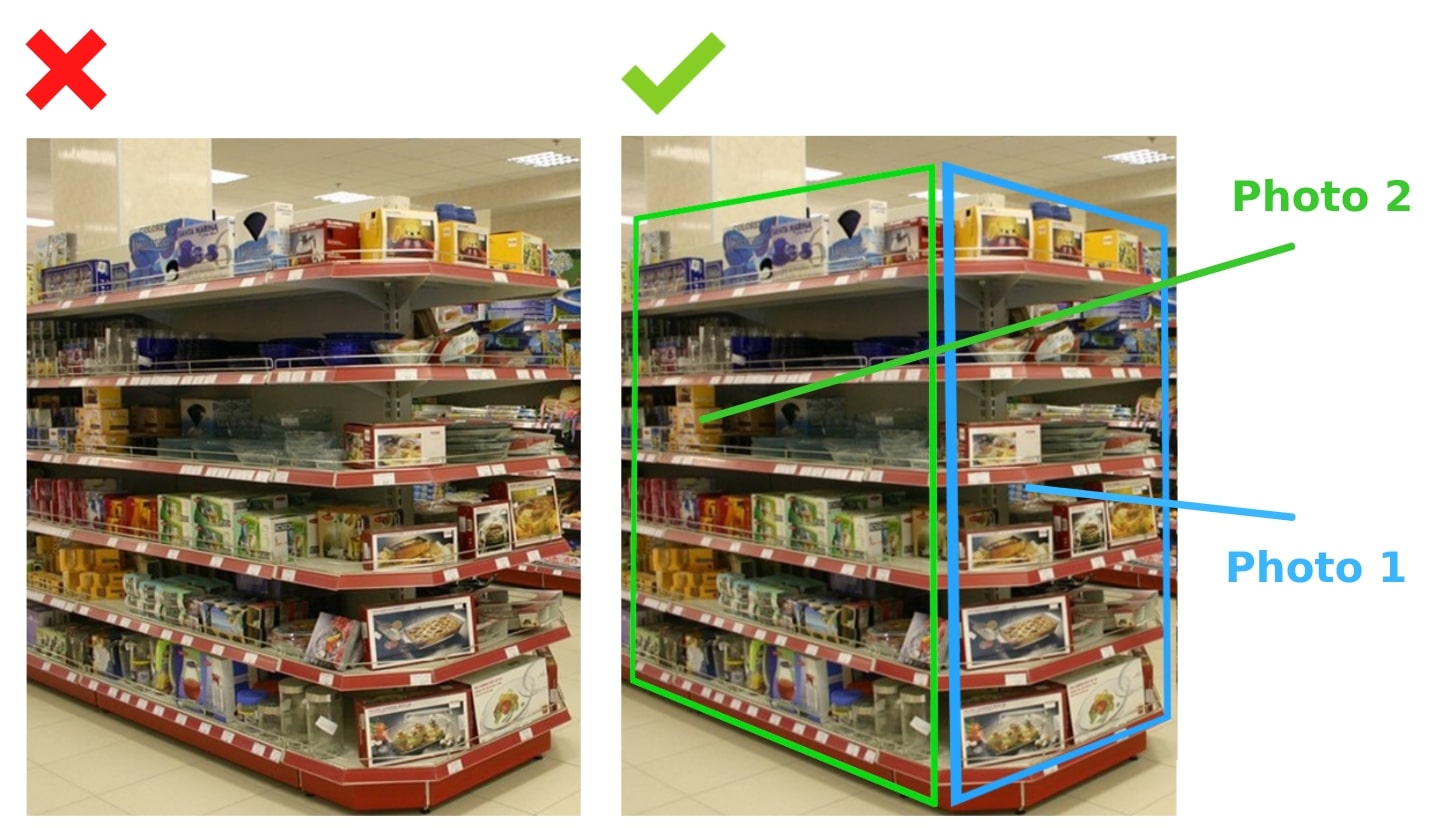You are a merchandiser. You are responsible for the presentation of goods in stores: layout, placement of advertising materials, monitoring of warehouse stock balance. To provide evidence of the completion of work, you take photos of store racks, generate reports and send them to managers. Stores do not always provide good conditions for taking a high-quality photo: narrow aisles, long shelves. There are many shops and retail outlets, so dozens of photos have to be taken. The quality of the photos is poor, and it becomes difficult for the manager to assess the correct layout of goods. If you send a lot of low-quality photos, the manager may de-bonus the merchandiser at the end of the month. To prevent this, there are some simple rules on how best to photograph racks.

These rules were shared by Anastasia Bordak, Development Manager for the Goods Checker IT solution from IBA Group.
Table of Сontents
How to take a high-quality photo to satisfy managers
Rule 1: don’t use flash. If flash is used, the packaging of the product may glare, especially in case of polypropylene. Under these circumstances, it will be difficult or even impossible to distinguish which product is on the shelf.
Rule 2: sharpen. Autofocus helps to make the photo pin-sharp. Autofocus is available in every smartphone. Just wait 1-2 seconds before shooting, and the camera will focus on the objects by itself. If the photo is blurry, you should redo it.

Rule 3: take photos at a distance not exceeding two meters from the rack. If you take photos at a distance of more than two meters, the goods in the pictures are no longer visible even to the human eye. And the manager will not be able to check the layout and will reject the photo.

Rule 4: one rack — one photo. All objects on the rack must be visible in the image. This means that the rack must fit completely in the photo. Otherwise, it is impossible to check the part of the image that does not appear on the photo. Such photo also cannot be digitized in the future for further analysis by neural networks.

Issue: what if the rack cannot be photographed in one shot, so that all objects are clearly visible?
This is a common issue. Shelves in shops are long and do not fit in one frame even with horizontal shooting.
Angle-wise photos are not appropriate, since distant goods are difficult to distinguish.

This issue may be addressed with a series of photos. Several pictures can be combined into one and get a photo of the whole rack.

You can “merge” images manually or using special applications. Let’s consider photo merging using the Goods Checker IT solution.

In order for the Goods Checker to “merge” the pictures correctly, you need to overlap the pictures. This means that each photo should show the transition from one group of products to another.
The diagram shows the correct overlap. The first and second pictures show products from different groups.

The Goods Checker mobile application recognizes the goods in the photo and checks the layout against the planogram. It helps to align the image and merges several images into one. And the web application also allows you to create planograms and view detailed analytics by merchandisers, stores, goods, etc.
Rule 5: take photos as frontally as possible so that there are no extreme angles in the photo. This aspect has already been mentioned earlier. If the photo is slightly tilted and distant goods are easy to recognize, the photo is all right. But if the angle of the picture is very large, then distant goods intermix and they cannot be recognized, which means that the layout cannot be checked.

Rule 6: one series of photos — one category and one rack. If there are ketchup and sunflower oil on the same rack, then there is no need to photograph them together. Better take two photos with each product category separately.

Rule 7: take photos of each side of the rack separately. If the rack is large and has multiple sides, then each side must be photographed separately. No need to try to shoot it from the side so that you can see everything at once. In this case, it will be difficult to check the layout.

Rule 8: remove obstacles that interfere with checking the planogram. There should be no people, shopping carts, boxes or other objects in the photo that cover part of the rack. In such cases, it is impossible to fully check the display of goods.

Also, do not photograph the surroundings of the rack. They only interfere with distinguishing objects.

Rule 9: check if the photo is upside down. It’s trite to say so but practice shows that people often send upside-down pictures. This happens due to haste or fatigue; often the phones automatically invert photos, and due to other factors.
Automation will make the life of merchandisers and managers better
The rules seem simple, but when a merchandiser needs to go around dozens of stores, take dozens of photos, then looking for the right angle becomes tiresome. After all, the human error still exists.
The merchandiser has a lot of work at the outlet: lay the goods, check its compliance with the planogram, take a resulting photo, complete the check list, and generate a progress report. Doing it all manually takes a long time, both for the merchandiser and the manager. The latter has to sort all the photos manually, assess them and generate their own reports.
It is not difficult to take a high-quality photo. Do not use flash, but use autofocus, take pictures as frontally as possible, remove obstacles, do not try to cover everything at once with one photo – simple rules that will simplify the life of merchandisers and help not to lose the bonus at the end of the month.




